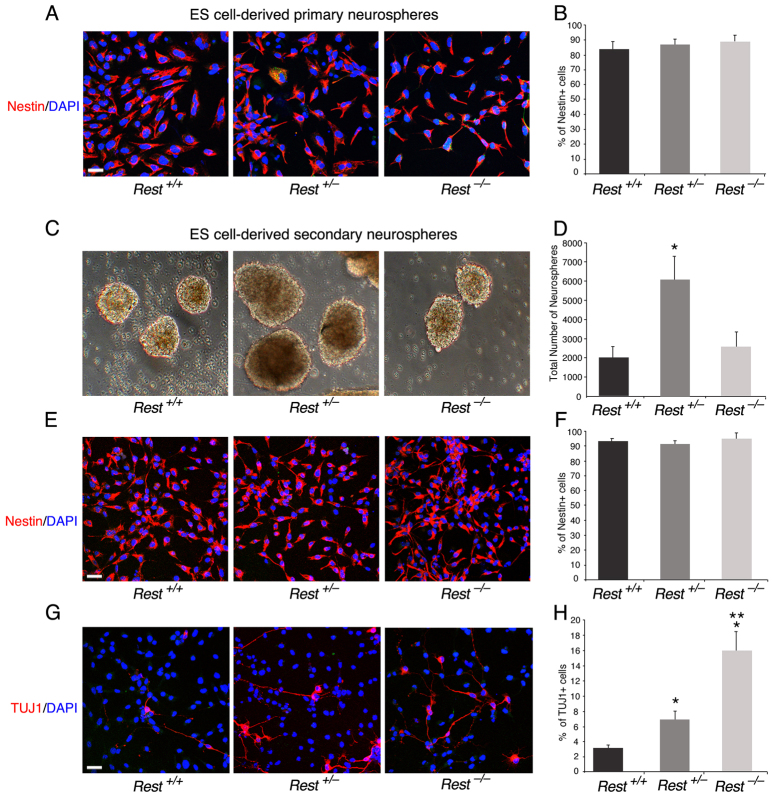Fig. 3.
ES cells that lack REST are able to generate nestin-positive neurospheres albeit with some precocious neuronal differentiation. (A) Primary neurospheres generated from ES cells comprise largely nestin-positive NS/P cells. Immunostaining of dissociated neurospheres is shown. Nestin, NS/P marker; DAPI, nuclear marker. (B) Bar graph showing the fraction of nestin-positive NS/P cells in the different neurospheres. (C) Rest+/– and Rest–/– ES cells are able to generate secondary neurospheres similar to Rest+/+ ES cells. (D) Bar graphs indicating equal number of neurospheres generated from wild-type and Rest–/– ES cells but significantly higher number generated from Rest+/– ES cells (*P<0.05). (E) Secondary neurospheres generated from Rest+/– or Rest–/– ES cells comprise largely nestin-positive NS/P cells. Immunostaining of dissociated neurospheres is shown. Nestin, NS/P marker; DAPI, nuclear marker. (F) Bar graphs demonstrating no significant difference in the number of nestin-positive cells between the different secondary neurospheres. (G) Secondary neurospheres generated from Rest+/– and Rest–/– ES cells show some precocious neuronal differentiation. Immunostaining of dissociated neurospheres is shown. TUJ1, neuronal marker; DAPI, nuclear marker. (H) Bar graph indicating low but significant increase in the number of TUJ1-positive cells in secondary neurospheres generated from Rest+/– and Rest–/– ES cells (*P<0.05). There is also a significant increase in the number of TUJ1-positive cells in Rest–/– relative to Rest+/– secondary neurospheres (**P<0.05). All error bars are mean ± s.e.m. based on three independent experiments. Scale bars: 50 μm.

